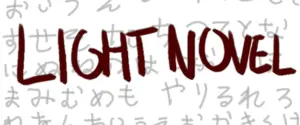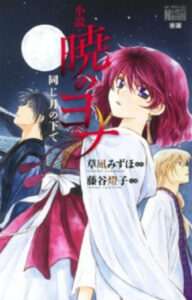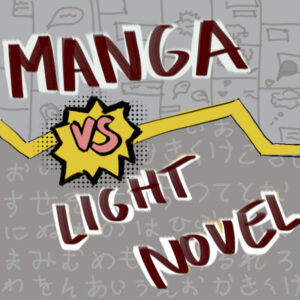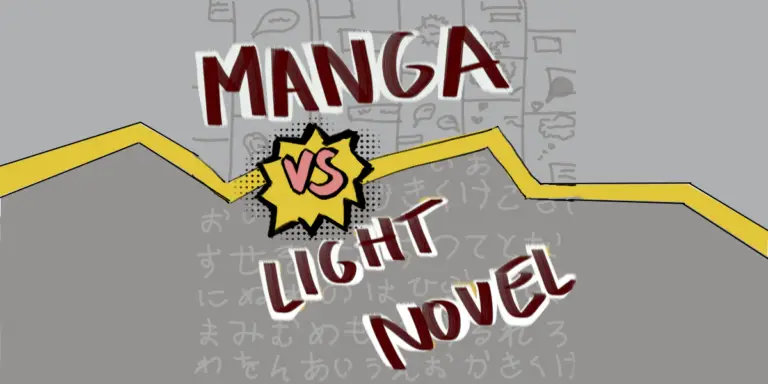Mangas and light novels often share the same shelves in stores and libraries, but they are distinct forms of storytelling. This article will highlight the key differences between them, helping you understand and appreciate both formats.
Table of Contents
ToggleWhat is a Manga?
I know this may seem like a trivial question to most of you, but for the sake of thoroughness, here is a brief definition:
Manga (漫画) is the Japanese term for “comic,” regardless of its country of origin. Outside Japan, however, the word manga refers specifically to comics from Japan or works that resemble typical Japanese comics. Manga are usually serialized, combining intricate artwork with short passages of text to tell stories.
What is a Light Novel?

A light novel (ライトノベル or ラノベ) is a style of Japanese novel primarily aimed at teenagers and young adults. The term “light” highlights its approachable and easy-to-read nature. Light novels often include furigana (phonetic guides for kanji) and colloquial language, making them accessible to younger readers. They also incorporate illustrations similar to manga, usually placed at the beginning or end of chapters to punctuate the narrative.
Appearance and Structure: What do Light Novels look like?

Covers often resemble those of manga, with detailed character illustrations, although this depends on the specific title. Light novels are typically published in bunkobon size (about 105 × 148 mm or 4.13 × 5.82 inches), which makes them slightly smaller than a standard paperback – though formats can vary by publisher. Despite the term “light,” these novels can contain up to 300 chapters, offering plenty of content.
Light Novels:
- Smaller than standard paperbacks (approx. 105 × 148 mm / 4.13 × 5.82 in).
- Covers often feature detailed manga-style character art.
- Can run up to 300 chapters, providing substantial content.
Mangas:
- Emphasize visual storytelling, with artwork as the core and text in a supporting role.
- Typically serialized in magazines such as Shounen Jump, Dessert, or Hana to Yume before being compiled into volumes.
Manga vs. Light Novel – When did light novels become popular?
Many popular anime and manga series, such as Attack on Titan or Neon Genesis Evangelion, also have their own standalone light novels. Take Akatsuki no Yona as an example: there is an ongoing manga series, and alongside it, a light novel with short stories designed to enrich the narrative.
In Japan, light novels became especially popular in the 1990s. This new, more accessible way of storytelling quickly became iconic, and the Japanese market for light novels is now massive, generating well over 100 million dollars annually. In recent years, light novels have also gained popularity in the United States, but they are often still shelved together with manga, which explains why many readers confuse the two.
What comes first: Light Novel or Manga?
For many popular series, especially manhwa, the light novel comes first. If it sells well enough, it may be adapted into a manhwa. With manga, the process is often similar:
light novel → manga → anime
If the light novel is popular, it might be adapted into a manga, and if the manga gains traction, it can lead to an anime adaptation. However, this is not always the case. For example, Akatsuki no Yona received its light novel adaptation only after the manga had already become popular.
Manga vs. Light Novel – what‘s the difference?
| Manga | Light novel | |
| Pictures: | In manga, the pictures form the basis of the story, while the text plays only a secondary role – though it is still necessary. | In light novels, illustrations are used to break up long passages of text or are placed at the beginning and end of a chapter |
| Depth: | The depth of the characters’ feelings is conveyed through both drawings and text. It depends on the manga, but readers are often left to draw their own conclusions. | Since light novels consist mainly of text, certain situations or emotions can be explained in more detail than in manga, as the author can directly tell the reader what to feel. |
| Text: | Manga combines two elements: text and pictures. Text usually appears in speech bubbles or as short narrative passages within panels. | Light novels, by contrast, are entirely text-based. Still, they are written in a lighter style, without overly difficult vocabulary. |
| Readability: | Manga relies on both text and visuals, so if the artwork is messy or the panel layout chaotic, it can be difficult to follow. The frequent use of kanji – depending on the target audience – can also make reading more challenging for some readers. | Light novels, on the other hand, focus strongly on readability. They are written in prose with simple, accessible vocabulary, and in Japan they often include furigana to help younger readers understand the |
| Serialization: | Many publishers release anthologies with chapters of different manga each week or month – for example, Dessert, Shounen Jump, or Hana to Yume. | Light novels, however, are usually published as standalone volumes rather than serialized chapter by chapter. |
Where can I read Light Novels?
- Amazon Kindle: Offers a wide range of officially translated light novels, accessible on various devices through the Kindle app.
- BookWalker: A digital platform dedicated to manga and light novels, often featuring promotions and discounts.
- Yen Press: Publishes popular light novels in English, available in both print and digital formats.
- J-Novel Club: Specializes in translating and publishing light novels, with subscription options for early access to new chapters.
- Kobo: Provides a variety of light novels, accessible via Kobo eReaders and the Kobo app.
- Crunchyroll Manga: In addition to manga, also offers a selection of light novels through its subscription service.
- Tapas: Features officially translated light novels, available across devices via the Tapas app.
- Tappytoon: Offers a broad range of officially translated light novels, accessible on various devices through the Tappytoon app.
Do you want to know where you can read Manga and Webtoons legally? Check out my article.
Here are some publisher-imprints, who focus on selling light novels:
- Dengeki Bunko (from ASCII Media Works)
- Kadokawa Sneaker Bunko (from Kadokawa Shoten)
- MF Bunko J (from Media Factory)
- Kōdansha Ranobe Bunko (from Kōdansha)
Manga vs. Light Novel – which is better?

It all comes down to personal preference. If you are into visuals – like I am – reading manga is probably the better choice. Some series are so beautifully drawn that you can spend minutes just admiring the panels. And there’s one big advantage to manga: romantic moments, like kissing scenes, often feel more impactful because you see exactly how the author envisioned them.
If you prefer to let your imagination run wild and enjoy picturing scenarios in your head, light novels might be the better fit. While the occasional illustration is a nice bonus, a light novel reads much like a regular book – just written in a lighter, more accessible style.
In the end, manga and light novels complement each other well. If you’re a fan of a particular series, it’s often worth experiencing both formats, since light novels frequently add extra details and side stories.
Here is a quick summary:
Manga:
- Perfect for visual enthusiasts
- Stunning artwork enhances the reading experience
- Romantic or dramatic scenes often feel more impactful
Light Novels:
- Great for imaginative readers
- Allows for more detailed narrative exploration
- Occasional illustrations provide visual highlights without overshadowing the story
Manga vs. Light Novel – Here are some examples for well-known light novels:
- Re:ZERO -Starting Life in Another World
- Overlord
- A Certain Magical Index
- Sword Art Online
- Monogatari Series
- Toradora!
- The Saga of Tanya the Evil
- My Youth Romantic Comedy Is Wrong, As I Expected
Do you need some good Manga recommendations? Check out these lists:

